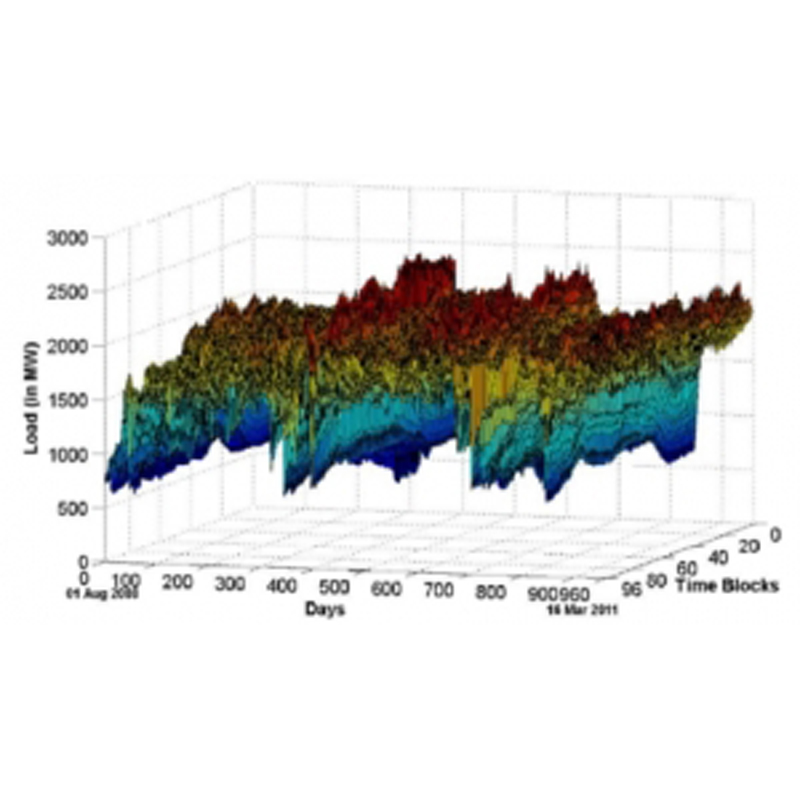
ELTRIX DOPS Module
Part No.: MPKK-ELTRIX-DOPS-Module
The Load Dispatch Centre is an important link between generation, transmission and distribution of electricity.
Product Description
ELTRIX DOPS Module
The Load Dispatch Centre (LDC) is an important link between generation, transmission and distribution of electricity. LDC (also called Independent System Operator (ISO) in some geographies) performs various functions such as load-generation balance, quality of supply, scheduling of generating units and transmission lines, load forecasting or demand estimation, system security and islanding facility, black start preparedness, energy distribution and load pattern study, as well as coordinating with neighboring regional grids to ensure safe and secure grid operation.
Overview
Dispatch Operations of Power System (DOPS) Module of ELTRIX provides LDCs and ISOs with an effective tool to perform various business and operational functions like monitoring and enforcing grid code compliance by constituents, optimal scheduling of dispatch operations, contingency management, forecasting, energy accounting and billing. DOPS is capable of supporting operations of various deregulated and regulated markets by means of standard information modules, rule and work flow management, and model based interfaces supported by ELTRIX platform.
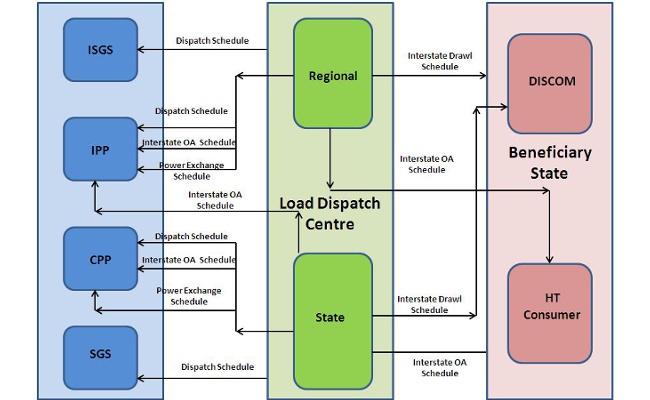
As required under the regulatory guidelines, all the generating stations in the region send their declared capacity a day ahead to LDC/ ISO. State Load Dispatch Centre (SLDC) collects the details of entitlement from Regional Load Dispatch Centre (RLDC) for the generating stations under the purview of RLDC. After verifying the quantum of approved intra state open access, SLDC checks the power/ energy exchange schedules. SLDC calculates the entitlement depending upon the allocation notified by government/ regulatory commission and quantum of power available from transmission system for individual distribution companies. This entitlement is sent to the distribution companies. Based on its entitlement and load forecast, distribution companies send their requisition of power to SLDC. SLDC calculates the dispatch schedule, drawl schedule and requisition to RLDC based on Merit Order Dispatch logic. Eltrix DOPS module enables all these functions and assists LDCs/ ISOs to carry out day- to-day operations efficiently without any error.
DOPS Module also automates the Short Term Open Access (STOA) approval process. The issuance STOA approval is subject to the receipt of previous Open Access (OA) charges payable if any by the STOA customer. Additionally, DOPS module calculates and publishes Total Transmission Capacity (TTC) and Available Transmission Capacity (ATC) data to SLDC website.
Regulation Management by ELTRIX Rule Governor
ELTRIX has a rule management system which helps to keep the regulatory part of the logic independent of software code. Any change in regulation does not require a change in the software code. The regulation related logic is built into ELTRIX as rules and rule sets using ELTRIX Rule Governor, and executed within the rule execution engine as part of the ELTRIX runtime server. Rules can be easily defined using intuitive graphics and simple English verbs that can be easily understood by a domain expert.
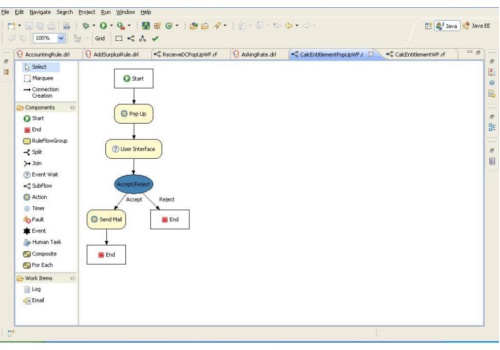
Key Features
ELTRIX DOPS module is designed to be easy to use, ease to integrate and meets interoperability requirements. It provides an integrated information system for operators at the individual generating unit's control centre as well as for plant management executives.
- Power Analysis with Phasor diagrams
- Supports IEC-62325 and Common Information Model (CIM) for market extension models
- Modeling of sub control area, interchange area, control area hierarchy, service and tie points as well as metering in compliance with CIM
- Interfacing with SCADA/ EMS and Energy meter data acquisition systems on industry standard interfaces like IEC-61970, IEC-61968-9 and ICCP type of interfaces.
- Special Validation and Substitution for Meter Data (also supports custom rules)
- Real-time Monitoring of the Power Dispatch Scenario within the Control Area and also interchanges with Host Control Area
- Web based interface for monitoring, reporting, analysis and work flow interactions required by various stake holders is available through ELTRIX decision portal
- Interface available with Extract Transform Load (ETL) functions to support multiple sources and modes of inputs from third party as well as for extracting schedule and drawl details
- Trend analysis of critical parameters like UI and frequency.
- Publishing of surplus energy on the website for entity to buy or trade on daily basis
- Standard and user configurable dashboards
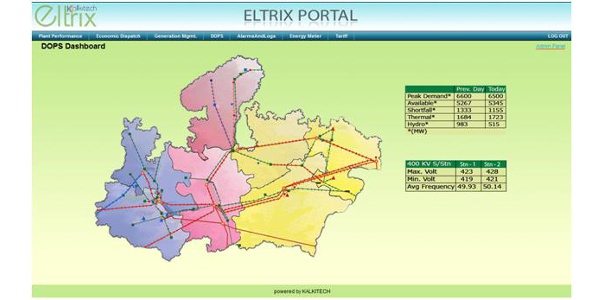
Components
The major components of the ELTRIX platform which are common across all modules are:
ELTRIX Engineering Editor
It is a rich client interface which allows the user to model and configure interchange, operating and sub-control area for LDC/ ISO and associated metering and measurement functions. Associated financial operations, market operations, validation settlement and reconciliation and scheduling models are configured for accounting and tariff calculation. Rule Governor within Eltrix Engineering Editor provides an interface for domain experts to configure regulatory logic, and helps to manage any changes in regulation. Work flow sub-component enables the users to build process/ business work flow needed for plant operations.
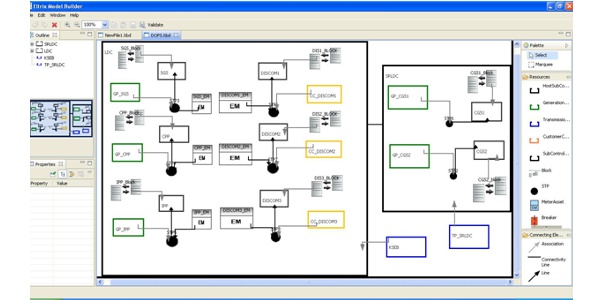
ELTRIX Runtime Server
It is the server component which performs real time data updates, objects storage and retrieval of data, tariff and accounting computations, rule and work flow execution. It has an OPC UA/ DA communication driver used for interaction with meter data acquisition system. It also manages interactions with a power exchange or LDC/ ISO over a TCP/ IP or web service transportation layer.
ELTRIX Decision Portal
It is the end user interface for plant operators or managers to visualize and analyze the KPIs, accounting/ tariff reports and generation trends and charts. It delivers a rich set of analytics and helps to track KPIs. Support of Web 2.0 technology makes it possible to deliver time critical information over a standard web client. User can generate daily, weekly, monthly, shift wise reports for different details available in solutions such as meter data, tariffs, energy exported and energy imported.
Benefits
- Implementation and vigilance of regulation and grid code
- Accounting & Tariff Management
- Reconciliation and settlement validations
- Management of open access and bilateral exchanges
- Implementation of optimal schedules for energy drawl and generation
- Re-scheduling on contingencies
- Intelligent System Security